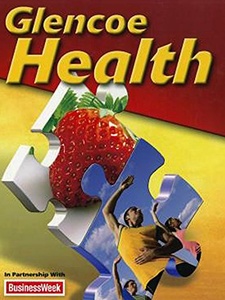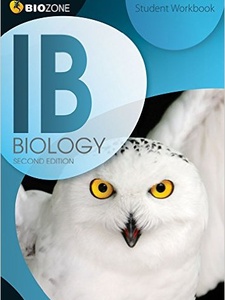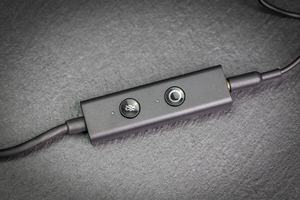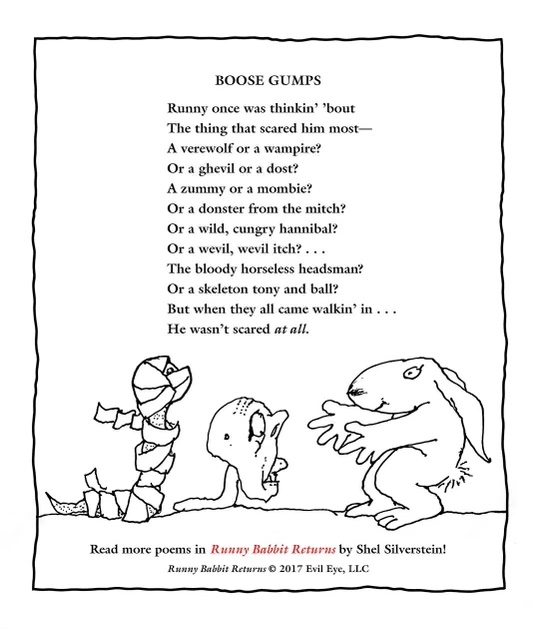
Becky Prestwich kicks us off with King of the Castle. We learn of Callum’s uncontrollable temper and Lacey’s willingness to sacrifice her innocence in order to protect her little brother. Child’s play acts as escapism from their anticipation of the return of their father, they role play as kings, oracles and rebels, and plan their revolution. Lacey (Charlotte Worthing) is great to watch and childlike-ness comes naturally and without unnecessary exaggeration. A well-written and heartbreaking piece of theatre.
A slightly awkward and messier piece followed, with Daniel Smith’s Broken Windows. A political party employing graffiti artists to promote their ideas anonymously soon becomes a statement about Bobby’s role in society: he is 38, unemployed and still living at home with his mum. It doesn’t hit the same spot as Prestwich’s piece, but is definitely worthy of its 15 minute slot.
The Collectors by Jaki McCarrick begins slowly with Virgil, a kidnapper, waiting for Penelope’s husband to pay her ransom. She persuades him that her husband won’t pay, and after a twist at the end, my presumptions of the piece were blown away. A moving, shocking and powerful piece.
After a cold interval, wrapped in my scarf, frightened to leave the slightly body warmed studio, we find ourselves at the fairground: Siân Owen’s offering, The Turn, is a charming piece of writing. As Lewis is stuck on the Ferris wheel with his brother, planning to propose to his girlfriend, Helene (Natasha James), she is below questioning their relationship with a fortune teller. Joseph (Hasan Dixon) and Lewis (Simeon Perlin) make a great double-act, bouncing off each other superbly. This piece shines with originality.
David, written by Daniel Kanaber, sees ‘Man’ (James Rigby) recount his life as an English student, living in London with his friend and his dying mother. Witty writing means this tragic monologue is light and humorous and engages us in the trauma as we manage to glimpse through his tough exterior and become acquainted with the vulnerable man inside.
Katie McCullough ends the evening with her Let Them Eat Cake. Two couples are picnicking, discussing their relationships and what they love/hate about each other. With delightfully funny and inspired performances from Worthing and Dowd it is a memorable way to end a memorable evening.
The design by Stephanie Williams, and direction, from Box of Tricks’s Artistic Directors, Hannah Tyrrell-Pinder and Adam Quayle, were simple and perfectly suited to each play.
Although not ‘revolutionary’ theatre, and despite the cold and hyper-trendy venue, it is well worth catching should you manage it before the 5 March. This is exactly the type of showcasing of work that should be done more often.
Word Play 4 is at the Arcola Theatre until 5th March. For more information on Box Of Tricks, see their website here.
Related
Wordplay — простая головоломка для поиска слов, но даже простые словесные игры могут поставить вас в тупик. Не волнуйтесь, мы здесь, чтобы помочь вам найти ответы, которые вы ищете. Не надо благодарить нас. Это просто, наша работа.
Покупка подсказки в Wordplay стоит больших денег. Сохраните свои монеты для последующих уровней и позвольте нам помочь вам бесплатно. Просто найдите нужный уровень из списка. Так или иначе, наша команда предоставит вам прохождение головоломки, которое вы ищете.
Следуйте нашим советам, чтобы привести свой мозг в порядок и развить навыки Wordplay:
Wordplay начинается с двух знакомых достопримечательностей для любого игрока в слова: набор пробелов и набор букв. Соедините буквы, чтобы составить слова (отсюда и броское название) и заполните пробелы. Заполните все пробелы, и вы перейдете на следующий уровень. В игре есть сотни, а не тысячи уровней, чтобы играть. Теперь вы рады, что сохранили свои монеты с помощью нашего сайта!
Wordplay Ответы
1 2 3 4 5 6 7 8 9 10 УРОВЕНЬ
11 12 13 14 15 16 17 18 19 20 уровень
21 22 23 24 25 26 27 28 29 30 уровень
31 32 33 34 35 36 37 38 39 40 уровень
41 42 43 44 45 46 47 48 49 50 уровень
51 52 53 54 55 56 57 58 59 60 уровень
61 62 63 64 65 66 67 68 69 70 уровень
71 72 73 74 75 76 77 78 79 80 уровень
81 82 83 84 85 86 87 88 89 90 уровень
91 92 93 94 95 96 97 98 99 100 уровень
101 102 103 104 105 106 107 108 109 110 уровень
WordPlay
для Windows
WordPlay — небольшая программа для изучения английского языка. Главной особенностью является то, что она превращает любой интересный или полезный английский текст в учебный тренажер, помогая адаптироваться к любой ситуации и среде. Это будет полезно для тех, кто совершенствует профессиональную лексику или хочет владеть самыми новыми словами и выражениями.
Особенности WordPlay:
- Тренировка в расстановке слов в предложении в правильном порядке.
- Изучение написания слов. Распознавание слова на слух.
- Изучение правильного употребления вспомогательных слов в предложении.
Что нового в WordPlay 2.0?
- Добавлена система контроля произношения.
- Добавлена система тестов и показа результатов и прогресса обучения.
- Добавлена система персональной адаптации к пользователю и автоматической разработки наиболее оптимальной стратегии обучения.
ТОП-сегодня раздела «Языки»

Англо-русский словарь — словарь с возможностью поиска перевода как русских, так и английскиих слов. Основан на словарях В.К.Мюллера…

ABBYY Lingvo — включает более 105 общелексических и 115 тематических словарей для перевода 20 языков…

Anki — программа для тренировки памяти с помощью флеш-карточек. Помогает запомнить больше…
Отзывы о программе WordPlay

Отзывов о программе WordPlay 2.0 пока нет, можете добавить…

Recommended textbook solutions
Glencoe Health
1st Edition•ISBN: 9780078913280 (1 more)McGraw-Hill Education
1,843 solutions
Miller and Levine Biology
1st Edition•ISBN: 9780328925124 (1 more)Joseph S. Levine, Kenneth R. Miller
1,773 solutions
IB Biology Student Workbook
2nd Edition•ISBN: 9781927173930Richard Allan, Tracey Greenwood
1,112 solutions
Biology Study Workbook A
1st Edition•ISBN: 9780133687187Kenneth R. Miller, Levine
2,875 solutions
Миниатюрный внешний USB ЦАП оснащен множеством функций для удобной коммуникации в режиме онлайн, и цена при этом вполне приемлемая.
Современная эпидемиологическая обстановка в мире повлияла в том числе и на выпуск новых гаджетов. Спрос на периферию, обеспечивающую качественную связь для онлайн работы и учебы, повысился, чем и воспользовались производители.
Для обычного общения между родственниками и знакомыми многие годы вполне хватало микрофона, динамика и веб-камеры, которые были встроены в ноутбук. Но когда онлайн общение стало частью работы, потребовался профессиональный подход, улучшающий и упрощающий процесс.
Именно таким устройством должен стать портативный внешний звуковой адаптер Creative Sound Blaster Play 4. Он не просто улучшает звук, как обычный USB-усилитель для наушников, но и имеет интеллектуальный функционал, позволяющий включать или отключать микрофон, а также выполняет двухстороннее шумоподавление.
Технические характеристики
- ЦАП: 24-бит/192 кГц;
- Звуковой процессор: SmartComms Kit, CrystalVoice, BlasterX Acoustic Engine;
- Соотношение сигнал/шум: до -110 дБ;
- Выход: 3.5 мм jack;
- Усиление: 16 – 150 Ом;
- Подключение: USB Type-C, Windows 10, macOS 10.14, PS4,5, Nintendo Switch, Android 8.0 или выше, iOS, iPad;
- Габариты: 138 × 16 × 8,2 мм;
- Вес: 8,3 г.
Упаковка и комплектация
Звуковой адаптер поставляется в картонной коробке. На лицевой стороне расположено изображение девайса и его наименование. С обратной стороны перечислены основные характеристики устройства.
Адаптер зафиксирован в формочке из поролона. В комплекте только переходник с USB-C на USB-A и документация, в которую входит подробная инструкция по подключению и эксплуатации.
Внешний вид
Корпус адаптера выполнен в виде призмы с закругленными боковыми ребрами. Изготовлен из пластика.
Короткий шнур соединяет корпус со штекером USB Type-C, коннектор позолоченный.
С лицевой стороны расположены две кнопки с индикаторами. Первая кнопка отвечает за включение и отключение микрофона, вторая – включение режимов эквалайзера.
С тыльной стороны изделия имеется логотип производителя.
С торца находится разъем 3,5 мм для подключения комбинированного 4-контактного разъема.
Подключение и софт
Подключение возможно как через USB-C, так и через переходник к обычным портам USB-А.
Девайс автоматически определяется как звуковое устройство. Для использования дополнительного функционала необходимо установить приложение Creative.
Данное приложение определяет подключенное устройство и все поддерживаемые им технологии, они отображаются на первой вкладке:
Звуковой режим – включает и регулирует уровни Acoustic Engine.
Acoustic Engine – дублирует предыдущую вкладку.
CrystalVoice – включение автоматической настройки уровня громкости, наложение эффектов на звук и устранение эха.
SmartComms Kit – набор интеллектуальных функций связи. Регулируется громкость голоса и окружающего шума. Отключает и включает микрофон через установленное время при отсутствии разговора. Уменьшает фоновый шум на установленный уровень (как исходящего, так и входящего звука).
На вкладках «Запись» и «Воспроизведение» настраивается частота дискретизации, а также подстраивается звук под выбранные из списка наушники.
Вкладка «Настройки» проверяет, загружает и устанавливает обновление приложения и прошивку для устройства. Возможен выбор языка и цветовой схемы для приложения.
Во время тестирования было замечено, что включение кнопки эквалайзера на адаптере не фиксируется в приложении. Также и изменения в приложении не влияют на индикацию адаптера. То же происходит и с кнопкой микрофона.
Тестирование
Тестирование параметров звукового адаптера осуществлялось с помощью программы Right Mark Audio Analyzer 6.4.4.
Лучшие результаты были получены при режиме 24-бит/192 кГц. Средняя оценка — «Хорошо».
АЧХ отличная, ровная до 20 кГц.
При включении «улучшайзеров» кнопкой получаются очень специфические графики АЧХ:
Низкие частоты, до 100 Гц, завышено до 1,5 дБ. На 300 дБ наблюдается спад до -0,5 дБ, такой же спад от 1 до 10 кГц. И подъем до 1 дБ на уровне 20 кГц.
Видим явный акцент на низких частотах и выделение 1 кГц – данная частота отвечает за «естественность» звучания композиции и голос человека. Вполне естественные настройки для данного звукового адаптера с включенным Acoustic Engine.
Динамический диапазон и гармонические искажения на хорошем уровне.
Уровень шума недостаточный и не соответствует заявленным -110 дБ, максимум что мы смогли получить – это средние -50 дБ. Конечно, нужно учитывать непрофессиональную измерительную аппаратуру, но разница очень уж значительная для погрешности измерения. Да и график очень неравномерный и пологий, от -50 до -100 дБ с увеличением к высоким частотам.
Тест шумоподавления при записи показал себя отлично. Для тестирования уровень шумоподавления был выставлен на средний. Использовалась обычная игровая гарнитура со встроенным микрофоном.
На частотных графиках мы видим полностью прямую линию при включенном шумоподавлении, хотя в этот момент на фоне работал телевизор и его «болтовня» была слышна даже в наушниках.
Во втором случае шумоподавление отключено, на записи звук голоса с телевизора четко слышен, что заметно и на графике. Также работает и шумоподавление входящего аудио.
Субъективная оценка
При активации режимов Dynamic и/или Bass Boost разница в звучании музыкальных композиций при подключении через звуковой адаптер и встроенную звуковую карту в ПК заметна. Детализация увеличивается, более напористым становится бас и чище высокие тембры. В режиме по умолчанию особых отличий по звуку нет.
При подключении к смартфону звук даже без включения «улучшайзеров» отличается по качеству, особенно при использовании хороших наушников. Также значительно усиливается по уровню громкости.
При подключении к ПК уровень звука был достаточно низким, прослушивать пришлось на 90-100% громкости.
Включение опции «Объемный звук» каких-то явных преимуществ не давало, заметной разницы, как в случае использования гарнитур с виртуальным 7.1 звучанием, мы не заметили.
Лучше всего адаптер себя проявляет именно в онлайн общении при активации функции SmartComms Kit.
Замолчал или отошел – микрофон выключается, начал разговор – он сам включается, не нужно постоянно контролировать кнопку включения/отключения. Работает корректно, без ошибок.
Программное шумоподавление на отличном уровне. Удаляются не только фоновые равномерные шумы в виде пылесоса или холодильника, но и фоновые разговоры людей, бормотание телевизора. При общении в офисе или классе лишние голоса не будут мешать общению.
Это распространяется не только на исходящее аудио, но и на входящее, лишние фоновые звуки подчищаются и от вашего собеседника. Такая функция встречается пока еще редко.
Программно можно настраивать агрессивность шумоподавления.
Во время эксплуатации проявилась и одна неприятность, возможно, связанная только с нашим экземпляром. Связь с девайсом иногда прерывалась. Как на ПК, так и на смартфоне. Похоже на плохой контакт или в штекере, или на подключении кабеля. Пошевелив кабель или переподключив девайс, его работа возобновлялась. Прошивка была установлена последняя, возможно, проблема решиться с выходом следующей прошивки.
Заключение
Creative Sound Blaster Play 4 – это звуковой адаптер, специально «заточенный» под онлайн общение на профессиональном уровне. Несомненно, его можно использовать и как обычную внешнюю звуковую карту или усилитель для наушников, но лучше всего он раскрывает свою функциональность именно в общении.
Интеллектуальные, программно настраиваемые функции SmartComms Kit и CrystalVoice грамотно выделяют и улучшают звучание голоса человека, обрезают фоновые звуки, в том числе и от собеседника. Автоматически включают и отключают микрофон.
Хорошо подходит адаптер и для онлайн игр, где требуется общение между тиммейтами. Звуки игр, благодаря настройкам Acoustic Engine, передаются атмосферно.
В дополнение к смартфону с разъемом USB-C адаптер можно использовать как усилитель для наушников.
У столь универсального девайса вполне приемлемая стоимость – менее трех тысяч рублей.
Плюсы:
- Миниатюрные размеры;
- Приемлемая цена;
- Автоматическое включение/отключение микрофона;
- Качественное двухстороннее шумоподавление;
- Функциональное программное обеспечение;
- Усиление сигнала;
- Переходник на USB-A в комплекте;
- Универсальность.
Особенности:
- Подключение USB Type-C;
- Выход комбинированный 4-контактный 3,5 мм jack.
Минусы:
- Нет переходника на miniUSB;
- Несъемный кабель USB-C.
Страница 1: Тест и обзор: Creative PLAY! 4 и EP-630i — хороший набор для домашнего офиса
В 2021 году многие сотрудники по-прежнему предпочли удаленную работу из-за продолжающихся ограничений. Неотъемлемой частью «удаленки» являются видеоконференции и голосовая связь, электронная почта и различные мессенджеры. Для комфортного общения голосом лучше всего использовать гарнитуру. В нашу тестовую лабораторию как раз поступила гарнитура EP-630i от Creative вместе с USB звуковой картой Sound Blaster PLAY! 4.
Звуковая карта/ЦАП USB PLAY! 4 предлагает функцию автоматического отключения и включения звука. Кроме того, через комплект SmartComms Kit обеспечивается двустороннее шумоподавление, весьма удобное для конференц-связи. Как считает Creative, Sound Blaster PLAY! 4 отлично подойдет для общения с коллегами по работе. А наушники-вкладыши Creative EP-630i справятся как с воспроизведением музыки, так и голосовой связью iPhone.
Подписывайтесь на группы Hardwareluxx ВКонтакте и Facebook, а также на наш канал в Telegram (@hardwareluxxrussia).
Технические спецификации Sound Blaster PLAY! 4
| Вес: | Основной модуль: 8,3 г Переходник: 4 г |
| Габариты: | Основной модуль: 138 x 16 x 8,2 мм Переходник: 23,5 x 13,5 x 6 мм |
| Динамический диапазон (DNR): | 110 dB |
| Звуковой процессор: | SmartComms Kit, CrystalVoice, BlasterX Acoustic Engine |
| Соотношение сигнал/шум: | 110 dB |
| Режимы воспроизведения: | PCM 16 бит: 44,1, 48,0, 88,2, 96,0, 192,0 кГц PCM 24 бит: 44,1, 48,0, 88,2, 96,0, 192,0 кГц |
| Качество записи микрофона: | Mono, 16 бит, 44,1, 48,0 кГц Mono, 24 бит, 44,1, 48,0 кГц |
| Платформа: | USB 2.0, USB 3.0, USB-C |
| Вход (основной модуль): | 1 x 1/8″ мини-джек (4 контакта, CTIA) |
| Усилитель наушников: | Импеданс: 16-150 Ω |
| Макс. число каналов: | Стерео |
| Технологии аудио: | CrystalVoice |
| Поддерживаемые ОС: | macOS X 10.14 или новее Windows 10 1703 или новее |
| Разрешение аудио: | до 24 бит / 192 кГц |
| ЦАП: | Динамический диапазон (стерео): 110 db |
| Подключение: | USB Type C Питание через USB |
| Рекомендованное использование: | Онлайн встречи Конференц-связь Видеоконференции |
Технические спецификации Creative EP-630i
| Тип: | Проводные наушники |
| Вес: | 11 г |
| Тип ношения: | Вставные (вкладыши) |
| Микрофон: | Импеданс: <2,2 кОм |
| Цвет: | Черный |
| Частотный диапазон: | 6–23.000 Гц |
| Длина кабеля: | 1,2 м |
| Размер динамиков: | 9-мм с неодимовым магнитом |
Creative Sound Blaster PLAY! 4 и Creative EP-630i в деталях
Внешняя звуковая карта/ЦАП PLAY! 4 USB оснащена кнопкой глушения микрофона и кнопкой эквалайзера с двумя звуковыми режимами Dynamic и Bass Boost. Есть и функция VoiceDetect. Она автоматически глушит микрофон, когда пользователь не разговаривает. С помощью упомянутой выше физической кнопки микрофон можно полностью заглушить. При этом LED на PLAY! 4 загорается красным.
Вторая кнопка на PLAY! 4 активирует режимы эквалайзера Bass Boost и Dynamic. Здесь тоже имеется свой индикатор. Если он горит белым, то включен режим Dynamic, если синим — Bass Boost. Режим Dynamic расширяет пределы звукового пространства и динамический диапазон для объемного звучания. Данный режим хорошо подходит для рабочих вызовов, чтобы уменьшить усталость от звонков. Но также он предназначен для игр с открытым миром и даже музыки. Bass Boost дает более насыщенный и глубокий бас для чистого, но мощного звучания. Этот режим подчеркивает эффект взрывов в фильмах и играх, он будет полезен и для музыки в стиле хеви-метал.
NoiseClean-In анализирует входящий звук, подавляя нежелательные шумы, чтобы в наушниках пользователь слышал только чистый голос коллеги. Представьте себе, что в комнате у коллеги прибираются с пылесосом, например. Технология NoiseClean-Out работает идентично, но фильтрует фоновый шум в комнате пользователя. Здесь Creative указывает шум вентиляторов, кондиционеров, очистителей и увлажнителей воздуха, фена, пылесоса, электробритвы, газонокосилки и т.д. Но данную функцию все же рекомендуется выключать после конференц-связи.
Комплект поставки и системные требования PLAY! 4
Кроме самой звуковой карты Sound Blaster PLAY! 4 в комплект поставки входит переходник USB-C на USB-A, руководство SmartComms Kit и руководство по быстрому старту. Гарантия составляет два года.
Для использования в паре с компьютером под Windows необходим, как минимум, Intel Core i3 CPU или эквивалентный процессор AMD. В системе должно быть больше 1 Гбайт ОЗУ, дискового пространства требуется 600 Мбайт. В случае систем Apple требуется macOS X 10.14 или более свежая. Производитель здесь не указал требования к CPU. Кроме компьютера, USB DAC можно подключать к игровым консолям или планшетам. Поддерживаются Sony PlayStation 4 и 5, Nintendo Switch. Также поддерживаются iPad Pro с 2018 года и все устройства, на которые установлена iPadOS 13. Что касается Android, требуется версия не ниже 8.0 и порт USB Type C.
Приложение
Приложение Creative под Windows можно скачать здесь. В нем доступны различные параметры. Можно включать различные звуковые режимы, а также активировать SmartComms Kit. Последний предлагает ряд умных функций для голосовой связи. Имеются вкладки Acoustic Engine и CrystalVoice. Можно менять настройки записи и воспроизведения звука. Наконец, в пункте «Настройки» можно проверить актуальную версию драйвера или провести сброс к заводским настройкам.
Гарнитура Creative EP-630i
EP-630i — стереогарнитура, которая хорошо подходит для прослушивания музыки и разговоров по телефону с помощью iPhone, если верить Creative. Черная гарнитура подключается 3,5-мм мини-джеком. Поэтому для iPhone новых поколений потребуется переходник, в комплект поставки он не входит. Кроме гарнитуры в коробке прилагаются три варианта насадок разных размеров. Creative отдельно отмечает, что EP-630i подходит только для iPhone и iPod, совместимость с другими плеерами и смартфонами не гарантируется. Для них Creative выпускает идентичную версию EP-630 без суффикса i.
На кабеле имеется пульт управления с микрофоном и кнопкой переключения между музыкой и голосовыми вызовами. Длина кабеля составляет 1,2 м. Размер неодимовых динамиков — 9 мм. Частотный диапазон заявлен от 6 Гц до 23 кГц, импеданс микрофона меньше 2,2 кОм.
Ограниченная гарантия на аппаратную часть составляет один год.
<>Тест и обзор: Creative PLAY! 4 и EP-630i — хороший набор для домашнего офиса
Тесты, заключение
Mentally stimulating
Easy combo of letters can be the most difficult.
One small change
I really like the layout of this game. But there is one small change I’d like to see and that’s the letters on the bottom of the screen. I’ve played many word games on the App Store and never had a problem reaching the letters. But for some reason I have trouble on here. If you could consider moving the letters a little closer to each other that’d be great, especially for people with smaller hands who have to swipe to the other side of their phone. If this is changed, I’d definitely give a higher rating. Thanks.
Fun but riddled with ads
This game is a unique concept and would be fun to play if there wasn’t an ad after almost every round. This led to me uninstalling it almost immediately. I get that you want money, but a better monetization strategy would be fewer ads which incentivizes the player to keep playing, so you’d make the money eventually, and then more.
Too many commercials
An excellent game but the commercials are too long and often difficult if not impossible to clear.
Needs a dictionary
I love the format but just can’t understand the logic this app uses to decide what it will accept as an English word and what it won’t. Way too many disallowed, but perfectly common, words.
Awesome
It makes you think
Word scramble
Fun game! Hate ads!!! Nothing is free 😝
Review
You don’t give enough points for solving the board
Stuck
I can’t even play the game. It’s stuck on an ad, and won’t go to the game
It goes without saying that writers are drawn to language, but because we love words so much, the English language is filled with word play. By interrogating the complexities of language—homophones, homographs, words with multiple meanings, sentence structures, etc.—writers can explore new possibilities in their work through a play on words.
It’s easiest to employ word play in poetry, given how many linguistic possibilities there are in poetry that are harder to achieve in prose. Nonetheless, the devices listed in this article apply to writers of all genres, styles, and forms of writing.
After examining different word play examples—such as portmanteaus, malapropisms, and oxymorons—we’ll look at opportunities for how these devices can propel your writing. But first, let’s establish what we mean when we’re talking about a play on words.
Check Out Our Online Writing Courses!

The Literary Essay
with Jonathan J.G. McClure
April 12th, 2023
Explore the literary essay — from the conventional to the experimental, the journalistic to essays in verse — while writing and workshopping your own.

Getting Started Marketing Your Work
with Gloria Kempton
April 12th, 2023
Solve the mystery of marketing and get your work out there in front of readers in this 4-week online class taught by Instructor Gloria Kempton.



Wordplay Definition
Word play, also written as wordplay, word-play, or a play on words, is when a writer experiments with the sound, meaning, and/or construction of words to produce new and interesting meanings. In other words, the writer is twisting language to say something unexpected, with the intent of entertaining or provoking the reader.
Wordplay definition: Experimentation with the sounds, definitions, and/or constructions of words to produce new and interesting meanings.
It should come as no surprise that many word play examples were written by Shakespeare. One such example comes from Hamlet. Some time after Polonius is killed, Hamlet’s uncle, Claudius, asks him where Polonius is. The below exchange occurs:
KING CLAUDIUS
Now, Hamlet, where’s Polonius?
HAMLET
At supper.
KING CLAUDIUS
At supper! where?
HAMLET
Not where he eats, but where he is eaten: a certain
convocation of politic worms are e’en at him. Your
worm is your only emperor for diet: we fat all
creatures else to fat us, and we fat ourselves for
maggots: your fat king and your lean beggar is but
variable service, two dishes, but to one table:
that’s the end.
The line “Not where he eats, but where he is eaten” is a play on words, drawing the audience’s attention to Polonius’ death. He is not eating, but being consumed by the worms. This play on the meaning of “eat” utilizes the verb’s multiple definitions—to consume versus to decompose. (It is also an example of synchysis, and of polyptoton, a type of repetition device.)
The most common of word play examples is the pun. A pun directly plays with the sounds and meanings of words to create new and surprising sentences. For example, “The incredulous cat said you’ve got to be kitten me right meow!” puns on the words “kidding” (kitten) and “now” (meow).
To learn more about puns, check out our article on Pun Examples in Literature. Some of the play on words examples in this article can also count as puns, but because we’ve covered puns in a previous blog, this article covers different and surprising possibilities for twisting and torturing language.
Examples of a Play on Words: 10 Literary Devices
Word play isn’t just a way to have fun with language, it’s also a means of creating new and surprising meanings. By experimenting with the possibilities of sound and meaning, writers can create new ideas that traditional language fails to encompass.
Let’s see word play in action. The following examples of a play on words all come from published works of literature.
1. Word Play Examples: Anthimeria
Anthimeria is a type of word play in which a word is employed using a different part of speech than what is typically associated with that word. (For reference, the parts of speech are: nouns, verbs, adjectives, adverbs, pronouns, articles, interjections, conjunctions, and prepositions.)
Most commonly, a writer using anthimeria will make a verb a noun (nominalization), or make a noun a verb (verbification). It would be much harder to employ this device using other parts of speech: using an adjective as a pronoun, for example, would be difficult to read, even for the reader familiar with anthimeria.
Here are some word play examples using anthimeria:
Nouns to Verbs
The thunder would not peace at my bidding.
—From King Lear, (IV, vi.) by Shakespeare
The word “peace” is being used as a verb, meaning “to calm down.” Many anthimeria examples come to us from Shakespare, in part because of his genius with language, and in part because he needed to use certain words that would preserve the meter of his verse.
“I’ll unhair thy head.”
—From Antony and Cleopatra (II, v.) by Shakespeare
Of course, “unhair” isn’t a word at all. But, it’s using “hair” as a verb, and then using the opposite of that verb, to express scalping someone’s hair off.
Up from my cabin, My sea-gown scarf’d about me, in the dark
Groped I to find out them; had my desire.
—From Hamlet, (V, ii.) by Shakespeare
Shakespeare is using “scarf” as a verb, meaning “to wrap around.” Nowadays, the use of “scarf” as a verb is recognized by the Oxford English Dictionary, but at the time, this was a very new usage of the word.
Verbs to Nouns
It’s difficult to find examples of nominalization in literature, mostly because it’s not a wise decision in terms of writing style. Verbs are the strongest parts of speech: they provide the action of your sentences, and can also provide necessary description and characterization in far fewer words than nouns and adjectives can. Using a verb as a noun only hampers the power of that verb.
Nonetheless, we use verbs as nouns all the time in everyday conversation. If you “hashtag” something on social media, you’re using the noun hashtag as a verb. Or, if you “need a good drink,” you’re noun-ing the verb “drink.” Often, nouns become acceptable dictionary entries for verbs because of the repeated use of nominalizations in everyday speech.
Nouns and Verbs to Adjectives
“The parishioners about here,” continued Mrs. Day, not looking at any living being, but snatching up the brown delf tea-things, “are the laziest, gossipest, poachest, jailest set of any ever I came among.”
—From Under the Greenwood Tree by Thomas Hardy
The words “gossipest, poachest, jailest” might seem silly or immature. But, they’re fun and striking uses of language, and they help characterize Mrs. Day through dialogue.
“I’ll get you, my pretty.”
—From The Wonderful Wizard of Oz by L. Frank Baum
By using the adjective “pretty” as a noun, the witch’s use of anthimeria in The Wonderful Wizard of Oz strikes a chilling note: it’s both pejorative and suggests that the witch could own Dorothy’s beauty.
Anthimeria isn’t just a form of language play, it’s also a means of forging neologisms, which eventually enter the English lexicon. Many words began as anthimerias. For example, the word “typing” used to be a new word, as people didn’t “employ type” until the invention of typing devices, like typewriters. The word “ceiling” comes from an antiquated word “ceil,” meaning sky: “ceiling” means to cover over something, and that verb eventually became the noun we use today.
2. Word Play Examples: Double Entendre
A double entendre is a form of word play in which a word or phrase is used ambiguously, meaning the reader can interpret it in multiple ways. A double entendre usually has a literal meaning and a figurative meaning, with both meanings interacting with each other in some surprising or unusual way.
In everyday speech, the double entendre is often employed sexually. Indeed, writers often use the device lasciviously, and bawdry bards like Shakespeare won’t hesitate when it comes to dirty jokes.
Nonetheless, here a few examples of double entendre that are a little more PG:
“Marriage is a fine institution, but I’m not ready for an institution.”
—Mae West, quoted in The 2,548 Best Things Anybody Ever Said by Robert Byrne
The repeated use of “institution” suggests a double meaning. While marriage is, literally, an institution, West is also suggesting that marriage is an institution in a different sense—like a prison or a psychiatric hospital, one that she’s not ready to commit to.
“What ails you, Polyphemus,” said they, “that you make such a noise, breaking the stillness of the night, and preventing us from being able to sleep? Surely no man is carrying off your sheep? Surely no man is trying to kill you either by fraud or by force?”But Polyphemus shouted to them from inside the cave, “No man is killing me by fraud; no man is killing me by force.”
“Then,” said they, “if no man is attacking you, you must be ill; when Jove makes people ill, there is no help for it, and you had better pray to your father Neptune.”
—Odyssey by Homer
In Homer’s Odyssey, the hero, Odysseus, tells the cyclops Polyphemus that his name is “no man.” Then, when Odysseus blinds Polyphemus, the cyclops is enraged and tells people that “no man” did this, suggesting that his blindness is an affliction from the gods. In this instance, Polyphemus means one thing but communicates another, causing humorous ambiguity for the audience.
On the contrary, Aunt Augusta, I’ve now realized for the first time in my life the vital importance of being Earnest.
—The Importance of Being Earnest, A Trivial Comedy for Serious People by Oscar Wilde
In Oscar Wilde’s play, the protagonist Jack Worthing leads a double life: to his lover in the countryside, he’s Jack, while he’s Ernest to his lover in the city. The play follows this character’s deceptions, as well as his realization of the necessity of being true to himself. Thus, in this final line of the play, Jack realizes the importance of being “earnest,” a pun and double entendre on “Ernest.”
3. Word Play Examples: Kenning
The kenning is a type of metaphor that was popular among medieval poets. It is a phrase, usually two nouns, that describes something figuratively, often using words only somewhat related to the object being described.
If you’ve read Beowulf, you’ve seen the kenning in action—and you know that, in translation, some kennings are easier understood than others. For example, the ocean is often described as the “whale path,” which makes sense. But a dragon is described as a “mound keeper,” and if you don’t know that dragons in literature tend to hoard piles of gold, it might be harder to understand this kenning.
A kenning is constructed with a “base word” and a “determinant.” The base word has a metaphoric relationship with the object being described, and the determinant modifies the base word. So, in the kenning “whale path,” the “path” is the base word, as it’s a metaphor for the sea. “Whale” acts as a determinant, cluing the reader towards the water.
The kenning is a play on words because it uses marginally related nouns to describe things in new and exciting language. Here are a few examples:
Kenning In Beowulf
At some point in the text of Beowulf, the following kennings occur:
- Battle shirt — armor
- Battle sweat — blood
- Earth hall — burial mound
- Helmet bearer — warrior
- Raven harvest — corpse
- Ring giver — king
- Sail road — the sea
- Sea cloth — sail
- Sky candle — the sun
- Sword sleep — death
Don’t be too surprised by all of the references to fighting and death. Most of Beowulf is a series of battles, and given that the story developed across centuries of Old English, much of the epic poem explores God, glory, and victory.
Kenning Elsewhere in Literature
The majority of kennings come from Old English poetry, though some contemporary poets also employ the device in their work. Here are a few more kenning word play examples.
So the earth-stepper spoke, mindful of hardships,
of fierce slaughter, the fall of kin:
Oft must I, alone, the hour before dawn
lament my care. Among the living
none now remains to whom I dare
my inmost thought clearly reveal.
I know it for truth: it is in a warrior
noble strength to bind fast his spirit,
guard his wealth-chamber, think what he will.
—”The Wanderer” (Anonymous)
“The Wanderer” is a poem anonymously written and preserved in a codex called The Exeter Book, a manuscript from the late 900s. It contains approximately ⅙ of the Old English poetry we know about today. In this poem, an “earth-stepper” is a person, and a “wealth-chamber” is the wanderer’s mind or heart—wherever it is that he stores his immaterial virtues.
No, they’re sapped and now-swept as my sea-wolf’s love-cry.
—from “Cuil Cliffs” by Ian Crockatt
Ian Crockatt is a contemporary poet and translator from Scotland, and his work with Old Norse poetry certainly influences his own poems. “Sea wolf” is a kenning for “sailor,” and a “love cry” is a love poem.
There is a singer everyone has heard,Loud, a mid-summer and a mid-wood bird,
Who makes the solid tree trunks sound again.
He says that leaves are old and that for flowers
Mid-summer is to spring as one to ten.
He says the early petal-fall is past
When pear and cherry bloom went down in showers
On sunny days a moment overcast;
And comes that other fall we name the fall.
He says the highway dust is over all.
The bird would cease and be as other birds
But that he knows in singing not to sing.
The question that he frames in all but words
Is what to make of a diminished thing.
—“The Oven Bird” by Robert Frost
In this Frost sonnet, the speaker employs the kenning “petal-fall” to describe the autumn. The full text of the poem has been included, not for any particular reason, other than it’s simply a lovely, striking poem.
4. Word Play Examples: Malapropism
A malapropism is a device primarily used in dialogue. It is employed when the correct word in a sentence is replaced with a similar-sounding word or phrase that has an entirely different meaning.
For example, the word “assimilation” sounds a lot like the phrase “a simulation.” Employing a malapropism, I might have a character say “Everything is programmed. We all live in assimilation.”
For the most part, malapropisms are humorous examples of a play on words. They often make fun of people who use pretentious language to sound intelligent. But, in everyday speech, we probably employ more malapropisms than we think, so this device also emulates real speech.
The name “malapropism” comes from the play The Rivals by Richard Brinsley Sheridan. In it, the character Mrs. Malaprop often uses words with opposite meanings but similar sounds to the word she intends. Here’s an example from the play:
“He is the very pineapple of politeness!” (Instead of pinnacle.)
Malapropisms are also known as Dogberryisms (from Shakespeare’s Much Ado About Nothing), or as acyrologia. Though this word play device is employed humorously, it also demonstrates the complex relationship our brain has with language, and how easy it is to mix words up phonetically.
5. Word Play Examples: Metalepsis
Metalepsis is the use of a figure of speech in a new or surprising context, creating multiple layers of meaning. In other words, the writer takes a figure of speech and employs it metaphorically, using that figure of speech to reference something that is otherwise unspoken.
This is a tricky literary device to define, so let’s look at an example right away:
As he swung toward them holding up the handHalf in appeal, but half as if to keep
The life from spilling…
—“Out, Out” by Robert Frost
The expected phrase here would be “the blood from spilling.” But, in this excerpt, “life” replaces the word “blood.” The word life, then, becomes a metonymy for “blood,” and as this displacement occurs in the common phrase “spilled blood,” “life” becomes a metalepsis.
So, there are two layers of meaning going on here. One is the meaning derived from the phrase “spilled blood,” and the other comes from the use of “life” to represent “blood.” In any metalepsis, there are multiple layers of meaning occurring, as a metaphor or metonymy is employed to modify a figurative phrase, adding complexity to the phrase itself.
This is a tricky, advanced example of word play, and it primarily occurs in poetry. Here are a few other examples in literature:
“Was this the face that launched a thousand ships and burnt the topless towers of Ilium?”
—Dr. Faustus by Christopher Marlowe
Here, the face in question is that of Helen of Troy, the most beautiful woman in the world (according to The Iliad and the Odyssey). Helen is claimed by Paris, a prince of Troy, and when he takes Helen home with him, it incites the Trojan war—thus the references to a thousand ships and the towers of Ilium. So, the face refers to Helen, and Faustus describes the beauty of that face tangentially, referencing the magnitude of the Trojan War.
“And I also have given you cleanness of teeth in all your cities.”
—The Book of Amos (4:6)
In this Biblical passage, the phrase “cleanness of teeth” is actually referencing hunger. By having nothing to eat, the people have nothing to stain their teeth with. Thus, the figurative image of clean teeth becomes a metalepsis for starvation.
“To-morrow, and to-morrow, and to-morrow,Creeps in this petty pace from day to day,
To the last syllable of recorded time;
And all our yesterdays have lighted fools
The way to dusty death. Out, out, brief candle!
Life’s but a walking shadow, a poor player,
That struts and frets his hour upon the stage,
And then is heard no more. It is a tale
Told by an idiot, full of sound and fury,
Signifying nothing.”
—Macbeth (V; v), by Shakespeare
This is a complex extended metaphor and metalepsis. Instead of saying “to the ends of time,” Shakespeare modifies this phrase to “the last syllable of recorded time.” He then extends this idea by saying that life is “a walking shadow, a poor player”—in other words, that which speaks the syllables of recorded time, and then never speaks again. By describing life as an idiot which signifies nothing, Macbeth is saying that life has no inherent value or meaning, and that all men are fools who exist at the whim of a random universe.
Note: this soliloquy arrives after the death of Macbeth’s wife, and it clues us towards Macbeth’s growing madness. So, yes, it’s a very dark passage, but dark for a reason.
To summarize: a metalepsis is a type of word play in which the writer describes something using a tangentially related image or figure of speech. It is, put most succinctly, a metonymy of a metonymy. There is also a narratological device called metalepsis, but it has nothing to do with this particular literary device.
6. Word Play Examples: Oxymoron
An oxymoron is a self-contradictory phrase. It is usually just two words long, with each word’s definition contrasting the other one’s, despite the apparent meaning of the words themselves. It is a play on words because opposing meanings are juxtaposed to form a new, seemingly-impossible idea.
A common example of this is the phrase “virtual reality.” Well, if it’s virtual, then it isn’t reality, just a simulation of a new reality. Nonetheless, we employ those words together all the time, and in fact, the juxtaposition of these incompatible terms creates a new, interesting meaning.
Oxymorons occur all the time in everyday speech. “Same difference,” “Only option,” “live recording,” and even the genre “magical realism.” In any of these examples, a new meaning forms from the placement of these incongruous words.
Here are a few examples from literature:
“Parting is such sweet sorrow.”
—Romeo and Juliet (II; ii), by Shakespeare
“No light; but rather darkness visible”
—Paradise Lost by John Milton
“Their traitorous trueness, and their loyal deceit.”
—“The Hound of Heaven” by Francis Thompson
Note: an oxymoron is not self-negating, but self-contradictory. The use of opposing words should mean that each word cancels the other out, but in a good oxymoron, a new meaning is produced amidst the contradictions. So, you can’t just put two opposing words together: writing “the healthy sick man,” for example, doesn’t mean anything, unless maybe it’s placed into a very specific context. An oxymoron should produce new meaning on its own.
7. Word Play Examples: Palindrome
The palindrome is a word play device not often employed in literature, but it is language at its most entertaining, and can provide interesting challenges to the daring poet or storyteller.
A palindrome is a word or phrase that is spelled the exact same forwards and backwards (excluding spaces). The word “racecar,” for example, is spelled the same in both directions. So is the phrase “Able was I ere I saw Elba.” So is the sentence “A man, a plan, a canal, Panama.”
The longer a palindrome gets, the less likely it is to make sense. Take, for example, the poem “Dammit I’m Mad” by Demetri Martin. It’s a perfect palindrome, but, although there are some striking examples of language (for example, “A hymn I plug, deified as a sign in ruby ash”), much of the word choice is nonsensical.
Because of this, there are also palindromes that occur at the line-level. Meaning, the words cannot be read forwards and backwards, but the lines of a poem are the same forwards and backwards. The poem “Doppelganger” by James A. Lindon is an example.
Want to challenge yourself? Write a palindrome that tells a cohesive story. You’ll be playing with both the spellings of words and with the meanings that arise from unconventional word choice. Good luck!
8. Word Play Examples: Paraprosdokian
A paraprosdokian is a play on words where the writer diverts from the expected ending of a sentence. In other words, the writer starts a sentence with a predictable ending, but then supplies a new, unexpected ending that complicates the original meanings of the words and surprises the reader.
Here’s an example sentence: “Is there anything that mankind can’t accomplish? We’ve been to the moon, eradicated polio, and made grapes that taste like cotton candy.” This last clause is a paraprosdokian: the reader expects the list to contain great, life-altering achievements, but ending the list with something a bit more trivial, like cotton candy grapes, is a humorous and unexpected twist.
With the paraprosdokian, writers contort the expected endings of sentences to create surprising juxtapositions, playing with both words and sentence structures. Here are a few literary examples, with the paraprosdokian in bold:
By the time you swear you’re his,
Shivering and sighing,
And he vows his passion is
Infinite, undying—
Lady, make a note of this:
One of you is lying.
—“Unfortunate Coincidence” by Dorothy Parker
“By the wide lake’s margin I mark’d her lie –The wide, weird lake where the alders sigh –
A young fair thing, with a shy, soft eye;
And I deem’d that her thoughts had flown …
All motionless, all alone.
Then I heard a noise, as of men and boys,
And a boisterous troop drew nigh.
Whither now will retreat those fairy feet?
Where hide till the storm pass by?
On the lake where the alders sigh …
For she was a water-rat.”
—“Shelter” by Charles Stuart Calverley
9. Word Play Examples: Portmanteau
A portmanteau is a word which combines two distinct words in both sound and meaning. “Smog,” for example, is a portmanteau of both “smoke” and “fog,” because both the sounds of the words are combined as well as the definition of each word.
The portmanteau has become a popular marketing tactic in recent years. A portmanteau is also, often, an example of a neologism—a coined word for which new language is necessary to describe new things.
Here are a few portmanteaus that have recently entered the English lexicon:
- Fanzine (fan + magazine)
- Telethon (telephone + marathon)
- Camcorder (camera + recorder)
- Blog (web + log)
- Vlog (video + blog)
- Staycation (stay + vacation)
- Bromance (brother + romance)
- Webinar (web + seminar)
- Hangry (hungry + angry)
- Cosplay (costume + play)
Lewis Carroll popularized the portmanteau, but a work of fiction that’s rife with this word play is Finnegan’s Wake by James Joyce. The novel—which is notoriously difficult to read due to its use of foreign words, as well as its disregard for conventional spelling and syntax—has coined portmanteaus like “ethiquetical” (ethical + etiquette), “laysense” (layman + sense), and “fadograph” (fading + photograph).
10. Word Play Examples: Spoonerism
A spoonerism occurs when the initial sounds of two neighboring words are swapped. For instance, the phrase “blushing crow” is a spoonerism of “crushing blow.”
Often, spoonerisms are slips of the tongue. We might confuse our syllables when we speak, which is a natural result of our brains’ relationships to language.
Spoonerisms can be literary examples of a play on words. But they’re also just ways to have fun with language. An example is Shel Silverstein’s posthumous collection of children’s poems Runny Babbit: A Billy Sook.
How to Use a Play on Words in Your Writing
Writers can utilize word play for two different strategies: literary effect, and creative thinking.
When it comes to literary effect, a play on words can surprise, delight, provoke, and entertain the reader. Devices like oxymoron, metalepsis, and kenning offer new, innovative possibilities in language, and a strong example of these devices can move the reader in a way that ordinary language cannot.
Word play can also stimulate your own creativity. If you experiment with language using literary devices, you might stumble upon the following:
- A title for your work.
- Character names.
- Witty dialogue.
- Interesting or provocative description.
- The core idea of a poem or short story.
I’ll give a personal example. Once, in a fiction course, I was struggling to come up with an idea for a short story. A friend and I ended up bouncing words around and came up with the phrase “psychic psychiatrist” (an example of alliteration and polyptoton). Just playing with words like this was enough to inspire me to write a story about exactly that, a psychiatrist who predicts the future for their clients without realizing it.
Titles like The Importance of Being Earnest (a self-referential pun), “Dammit I’m Mad” (palindrome), or Back to the Future (oxymoron) all use word play to frame and guide the story or poem. You might find inspiration for your own work by considering, with careful attention and an appreciation for language, the many possibilities of a play on words.
Experiment with Word Play at Writers.com
The instructors at Writers.com are masters of word play. Not only do we love words, we love to mess with them in surprising and innovative ways. If you want to formulate new ideas for your work, take a look at our upcoming online writing classes, where you’ll receive expert instruction on all the work you write and submit.











